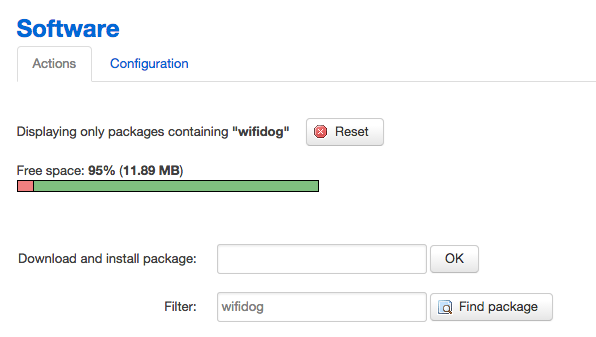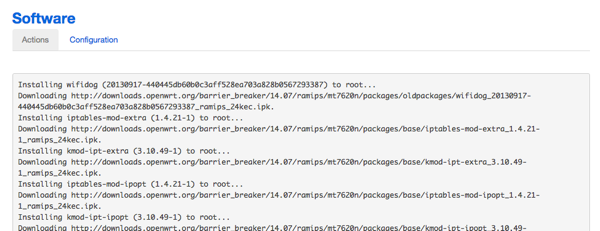OpenWrt wifidog 实现收费提醒效果
需求场景
有一个免认证的 Wifi SSID,比如叫:OpenWrt,附近的同学可以随便连上这个 SSID,没有缴过费的同学不管访问什么地址,都会被跳转到收费提醒页面,而缴过费的同学就可以开心上网了。
解决办法
从需求上来说,这是一个非常标准的 WifiDog 效果,如果未来有很复杂的需求,可以直接通过 WifiDog 来实现跳转,然后再通过 AuthPuppy 来实现账户管理,不过想在 OpenWrt 上同时部署 WifiDog 与 AuthPuppy 也不是一件很容易的事情。
因此我们准备考虑直接通过 iptables 来实现这个需求,未来如果有复杂的扩展需求,也不影响扩展到 WifiDog 来实现。
实现流程
通过 SSH 登录到 OpenWrt,打开 /etc/config/uhttpd,在文件的最顶部增加以下配置
config uhttpd 'portal'
list listen_http '0.0.0.0:11990'
option home '/www/portal'
option error_page '/index.html'
然后在 /www/portal 下新建一个名为 index.html 的静态文件,文件内容可以如下
<html>
<head>
<meta http-equiv="cache-control" content="no-cache">
<meta name="viewport" content="width=device-width, initial-scale=1">
<title>Wifi</title>
</head>
<body>
Email: xxxx@xxx.com
</bodu>
</html>
之后再打开 /etc/firewall.user 文件,在末尾添加如下配置:
iptables -t nat -A prerouting_lan_rule -p tcp -m tcp --dport 80 -m mark ! --mark 8 -j REDIRECT --to-ports 11990
iptables -t filter -A forwarding_lan_rule -m mark ! --mark 8 -j REJECT
保存后执行 /etc/init.d/firewall restart 重新载入 iptables 的配置
然后再执行 /etc/init.d/uhttpd restart 重新载入 uhttpd 的配置
然后用手机连接这个无线网络,你就会发现总是弹出这个提示页面了
用户授权
当有用户缴费了之后,向他要到他的MAC地址,同样打开 /etc/firewall.user 文件,比如这个用户有 2 个设备,MAC 地址分别是 00:00:00:00:BB:AA 与 00:00:00:00:BB:BB 则添加以下 2 条 规则,以后这 2 个设备就可以随便上网了!
iptables -t mangle -A fwmark -m mac --mac-source 00:00:00:00:BB:AA -j MARK --set-mark 8
iptables -t mangle -A fwmark -m mac --mac-source 00:00:00:00:BB:BB -j MARK --set-mark 8
添加后同样需要执行 /etc/init.d/firewall restart 以使配置生效
注意事项
如果通过以太网口访问 OpenWrt luci 管理界面也是那个收费提示,只需要把该机器的 MAC 地址同样授权一样即可
本文章由 http://www.wifidog.pro/2015/04/08/openwrt-wifidog-5.html 整理编辑,转载请注明出处






